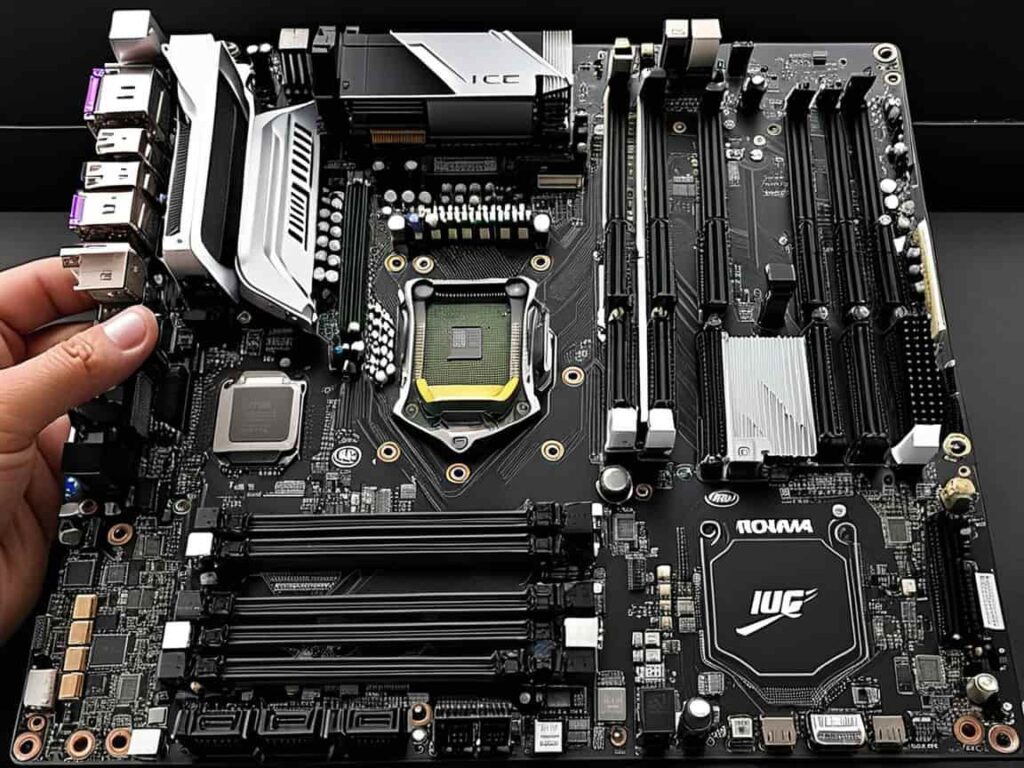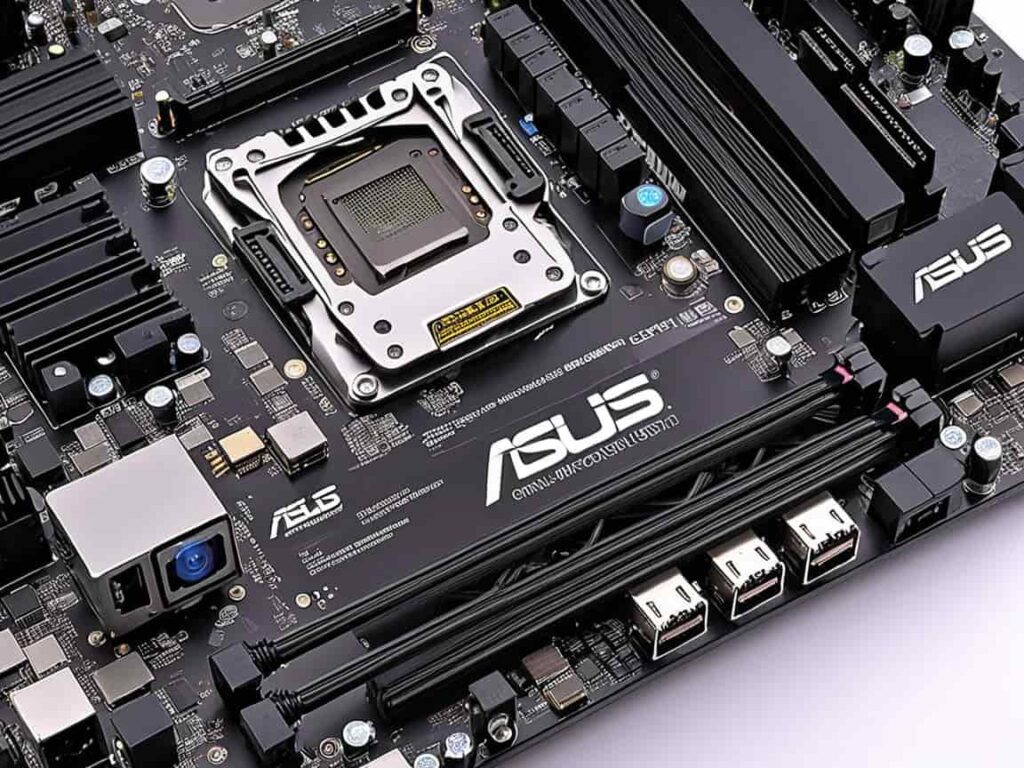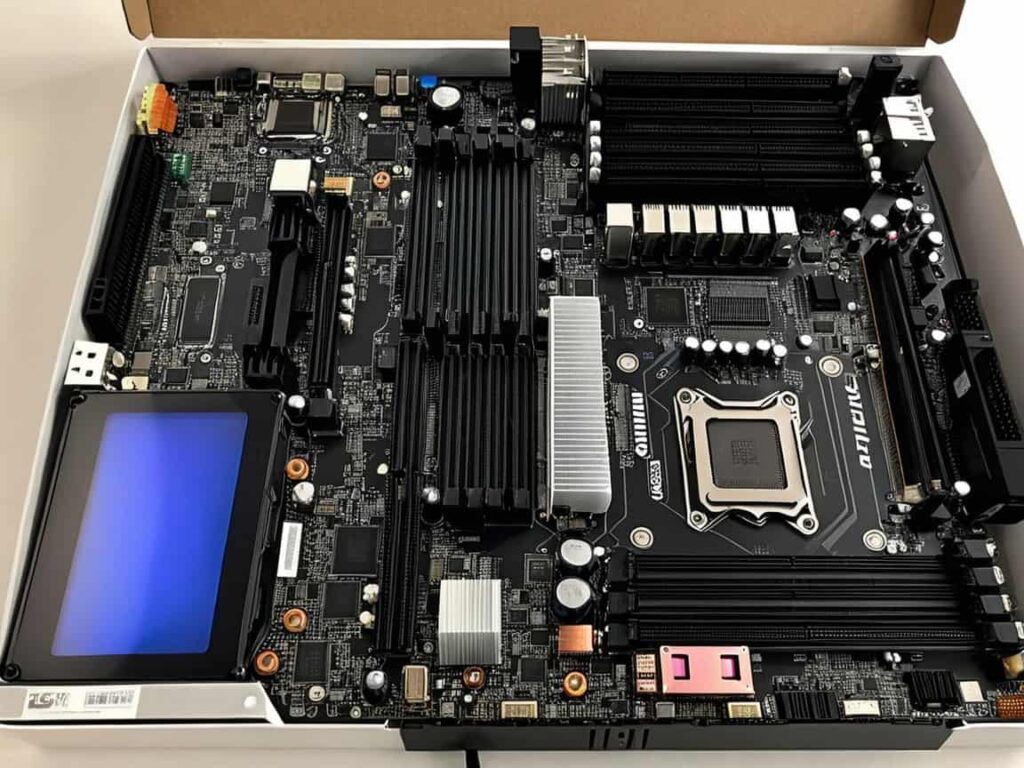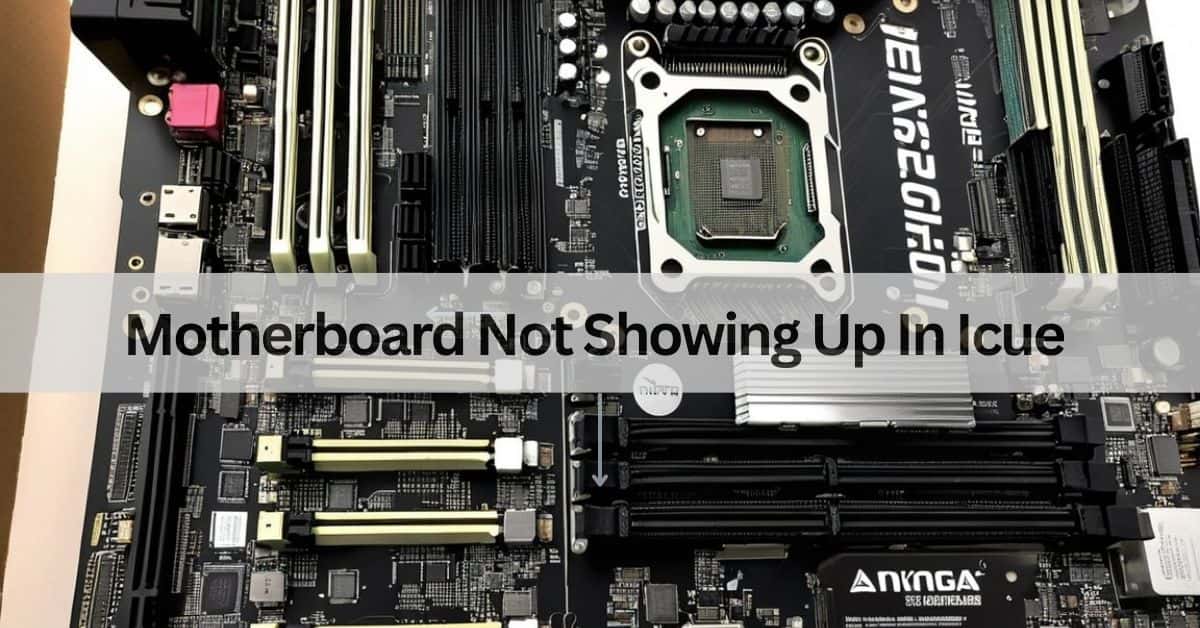Are you struggling with your motherboard not showing up in iCUE? I had the same issue and discovered it was a simple fix! Updating firmware and ensuring proper connections resolved it instantly—don’t let this glitch ruin your RGB setup!
If your motherboard is not showing up in iCUE, check if iCUE is updated to the latest version. Ensure your motherboard supports iCUE and that its drivers are installed. Restart your PC, and if the issue continues, try reinstalling iCUE.
This article will discuss “Motherboard Not Showing Up In ICUE”.
Table of Contents
Understanding Motherboard Not Showing Up In Icue:

If your motherboard is not showing up in iCUE, check if it’s compatible with the software. Ensure iCUE is updated, and the motherboard drivers are installed. Also, verify that the RGB headers are properly connected and enabled in the BIOS settings.
Read More: Why Is Every B450 Motherboard Micro – Here’s What You Need to Know!
What is iCUE?
iCUE is software from Corsair that lets you control and customize Corsair devices like keyboards, mice, fans, and RGB lights. It helps users create lighting effects, monitor hardware performance, and adjust device settings, all in one simple and user-friendly platform.
Common Causes of Motherboard Not Showing in iCUE:
1. Incompatibility with iCUE
- Not all motherboards are compatible with iCUE.
- Only certain models from manufacturers like ASUS, MSI, and Gigabyte support iCUE integration.
- Check if your motherboard is listed as supported on Corsair’s official website.
2. Outdated iCUE Software
- Running an outdated version of iCUE can cause compatibility issues.
- Always ensure your iCUE software is updated to the latest version available.
3. Missing or Corrupt Plugins
- iCUE requires specific plugins to communicate with your motherboard.
- Missing, outdated, or corrupt plugins can prevent proper detection.
4. Improper RGB Header Connection
- If your motherboard’s RGB headers are not connected correctly, iCUE may not recognize it.
- Double-check all connections to ensure proper setup.
Detailed Solutions for Common Issues:
1. Why is my motherboard not showing up in iCUE?
- Ensure the motherboard supports iCUE integration by checking its specifications.
- Confirm that the iCUE software is installed correctly and running in the background.
2. Does my motherboard support iCUE integration?
- Visit the Corsair website for a list of supported motherboards.
- Look for “iCUE compatibility” in the motherboard’s product manual or official webpage.
3. How do I enable iCUE compatibility on my motherboard?
- Install the latest firmware for your motherboard from the manufacturer’s website.
- Enable RGB lighting control in the BIOS settings if required.
Why is iCUE not detecting my device?
iCUE might not detect your device due to outdated software, unsupported hardware, or connection issues. Check if your device is compatible, update iCUE to the latest version, and ensure cables or wireless connections are secure. Restart your PC to fix minor glitches.
How to get the Asus motherboard to show up in iCUE?

To get your ASUS motherboard to show up in iCUE, make sure you have the latest version of iCUE installed. Also, check if your motherboard supports iCUE integration. If needed, update your BIOS and ensure all required drivers are installed properly for full compatibility.
Read More: Should I Connect HDMI to GPU or Motherboard -Ultimate Guide 2024!
Step-by-Step Troubleshooting Guide:
1. Check Compatibility with iCUE
- Ensure your motherboard is compatible with iCUE software. Not all motherboards support iCUE integration, especially older models or certain brands.
- Visit the Corsair website to verify if your motherboard is listed as compatible.
2. Update iCUE Software
- Outdated iCUE versions may fail to detect your motherboard. Make sure you’re running the latest version of iCUE.
- Open iCUE and go to the settings menu to check for updates, or download the latest version from Corsair’s official website.
3. Verify Hardware Connections
- Check the physical connections of your motherboard’s RGB headers and Corsair peripherals.
- Ensure all cables are securely plugged into the motherboard and any Corsair devices you intend to control via iCUE.
4. Install or Update Corsair Drivers
- Install or update the necessary drivers for your Corsair devices. In some cases, missing or outdated drivers can cause detection issues.
- Visit the Corsair support page to download and install the latest drivers.
Does my motherboard support iCUE integration?
To check if your motherboard supports iCUE integration, visit the manufacturer’s website or check the motherboard’s manual for iCUE compatibility. iCUE works with certain Corsair products, and not all motherboards support it. Ensure your motherboard is listed as compatible before installing.
Why is my iCUE not displaying?
If your iCUE software is not displaying, try restarting your computer, checking for software updates, or reinstalling iCUE. Also, make sure your Corsair device is properly connected and that your system meets the software requirements. Sometimes, a simple restart can fix display issues.
How to Check for Hardware Compatibility:
To check hardware compatibility, first, identify your system’s requirements (like CPU, RAM, and motherboard). Compare these with the specifications of the new hardware you want to use. Use tools like PCPartPicker to easily find compatible parts and avoid potential issues during installation.
Why isn’t my Corsair RAM showing in iCUE?
If your Corsair RAM isn’t showing in iCUE, try restarting your PC and ensuring iCUE is up to date. Make sure your RAM is properly installed and connected. If the issue persists, check for driver updates or reinstall iCUE to fix any software glitches.
Unable to detect Motherboard on issue – Corsair Community:
If your motherboard is not detected on iCUE, try these steps: Ensure the motherboard is compatible with iCUE, update your iCUE software, and check all connections. Restart your PC and reinstall iCUE if necessary. Contact Corsair support for further help if the issue persists.
ICUE Not Detecting Mobo Or GPU:
If iCUE isn’t always detecting your motherboard or GPU, strive to restart your PC, update the iCUE software program, and check all connections. Ensure that the motherboard and GPU drivers are up to date. You may additionally want to reinstall iCUE or test for hardware compatibility troubles.
Asus Motherboard is now no longer detected with the aid of using iCUE.
If your Asus motherboard isn`t detected with the aid of using iCUE, strive to restart your PC and reinstall the iCUE software program. Make certain the motherboard is attached well and that your drivers are as much as date. You also can test BIOS settings to make certain USB ports are enabled.
ASUS Motherboard RGBs No Longer Detected?
If your ASUS motherboard RGBs are now no longer detected, perform those steps: Check if the RGB settings are enabled inside the BIOS, replace your motherboard drivers, or reinstall the ASUS Aura software program. If the difficulty persists, reset the BIOS or touch customer service for assistance.
ASUS motherboard now no longer displaying up in iCUE 2024?
If your ASUS motherboard isn’t always displaying up in iCUE 2024, strive to restart your PC and reinstall the iCUE software program. Make certain your motherboard’s firmware is up to date and that iCUE helps your particular ASUS model. Check connections and strive for the use of a distinctive USB port if needed.
MSI motherboard now no longer displaying in iCUE?
If your MSI motherboard isn`t displaying up in iCUE, make certain the iCUE software program is up to date with the modern-day version. Also, test in case your motherboard is well-matched with iCUE. Restart your PC, reconnect the cables, and reinstall iCUE if needed.
Should I reinstall iCUE if my motherboard isn’t always displaying up?

If your motherboard isn’t always displaying up in iCUE, strive to reinstall the software program. This can restore any troubles because of corrupted documents or old drivers. Make certain your motherboard is well connected, and test for any updates to iCUE earlier than reinstalling.
Read More: Code 57 on Motherboard – Easy Steps to Resolve It!
FAQs:
1. How do I recognize if my motherboard battery desires replacement?
If your laptop suggests the wrong date and time or fails as well properly, it may imply the demise motherboard battery. An easy take look at thru BIOS can affirm if the battery is the issue.
2. How lengthy does an average motherboard battery ultimate?
Most motherboard batteries, just like the CMOS battery, are ultimate among five to ten years old. The lifespan can vary depending on utilization and the kind of motherboard.
3. Can a lifeless motherboard battery motivate boot problems?
Yes, a lifeless battery can motivate boot issues, together with failurelure to load BIOS settings, wrong device time, or failure as well entirely. Replacing the battery generally fixes this.
Conclusion:
Motherboard batteries usually ultimate five-10 years, and changing them is straightforward. If you`re going through boot or BIOS issues, a brand new battery is probably the solution. Reinstalling software program like iCUE also can assist repair detection problems. Always make certain you are the usage of an appropriate battery kind and observe right set up steps.
